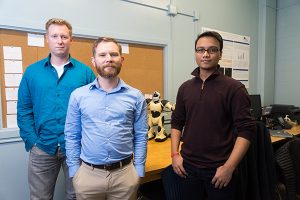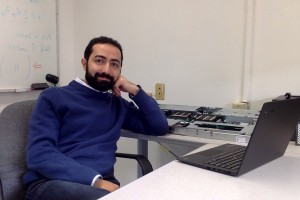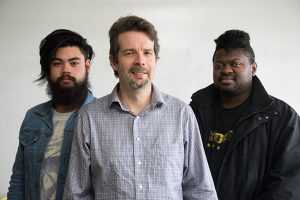Fox News KTVU interviewed Assistant Professor Serena Alexander, Department of Urban and Regional Planning, about the planned billion-dollar expansion of the Mineta San Jose International Airport, which Alexander links to the ongoing tech boom. “The relationship between airports and economic growth is self-reinforcing and simultaneous,” she said. In 2017, passenger numbers at the airport increased by 1.7 million, according to an airport spokesperson.
In a Mercury News article, Department of Engineering Lecturer and Guided Pathways Academic Advisor Ahmed Banafa commented on the two chip flaws, dubbed Meltdown and Spectre, that have put computers and smartphones at risk worldwide, allowing hackers to steal data from the memory of running apps. “Here is the simple truth: every CPU created since 1995 is a victim of these bugs,” Banafa said.
BEAM Media, launched in 2017 to cover “luxury niches,” interviewed Professor Ken Gehrt, Department of Marketing and Decision Sciences, about the market for luxury Japanese fruits. “Fine fruit is part of the elaborately nuanced process of relationship cultivation in Japan,” Gehrt said. In 2016, a “pair of choice Hokkaido rockmelons went for a record $27,240” at auction, the article reported. Read more online.
Department of Music and Dance Lecturer Michael Hernandez, saxophonist and founding member of the Mana Quartet, weighed in on the San Francisco Classical Voice query: “Is Classical Music Getting More Saxy?” Invented in Belgium in the 19th century by Adolph Sax, the instrument was originally considered—and designed to be—an orchestral instrument, the article argues. Read more online.
Professor and Chair Melinda Jackson, Department of Political Science, was among those interviewed by the Mercury News regarding last month’s Women’s Marches in the Bay Area and throughout the nation. Bolstered by the social movements #MeToo and #TimesUp, tens of thousands of U.S. women marched with a focus on mobilizing women voters and encouraging more women to run for public office. According to the Center for American Women and Politics at Rutgers, a record number of women have announced as candidates in the 2018 elections. Read more online.
EdSurge interviewed Associate Professor Roxana Marachi, Department of Teacher Education, on the debate regarding the harmful effects on children’s development and wellbeing from constant access to tech devices. Marachi sides with educators who urge parents to wait until at least 8th grade before buying their children smartphones. Parents should recognize that devices and apps are designed to be addictive and should protect their children accordingly, Marachi said.
Associate Professor Harry Mathias, Department of Film and Theatre, was a featured presenter at the International Cinema Technology Association’s Los Angeles Seminar Series in January. An expert on image and projection quality, Mathias discussed the crossroads of technology and art in a special lecture. The two-day event also offered sessions on moviegoer research and new trends in cinema technology.
Professor Joseph Pesek, Department of Chemistry, has been tapped to receive the American Chemical Society’s 2018 Award for Research at an Undergraduate Institution. Well known for the development of silica hydride-based stationary phases for liquid chromatography, Pesek has published more than 230 works in his field. The award, sponsored by the Research Corporation of Science Advancement, will be presented on March 20 in conjunction with the 255th ACS national meeting in New Orleans.
Indian Express interviewed Associate Professor Aaron Romanowsky, Department of Physics and Astronomy, about the “supermassive black holes” that determine the lifespan of stars in every galaxy. “There are different ways a black hole can put energy out into the galaxy, and theorists have all kinds of ideas about how quenching (a star formation) happens. There’s more work to be done to fit these new observations in the models,” Romanowsky said.
iSchool Associate Professor Michael Stephens gave the keynote address at the Conference About Libraries and Literacy (C.A.L.L) held earlier this month on the University of Wisconsin – La Crosse campus. The conference focuses on the role of libraries in promoting literacy among kindergarten through college students.



